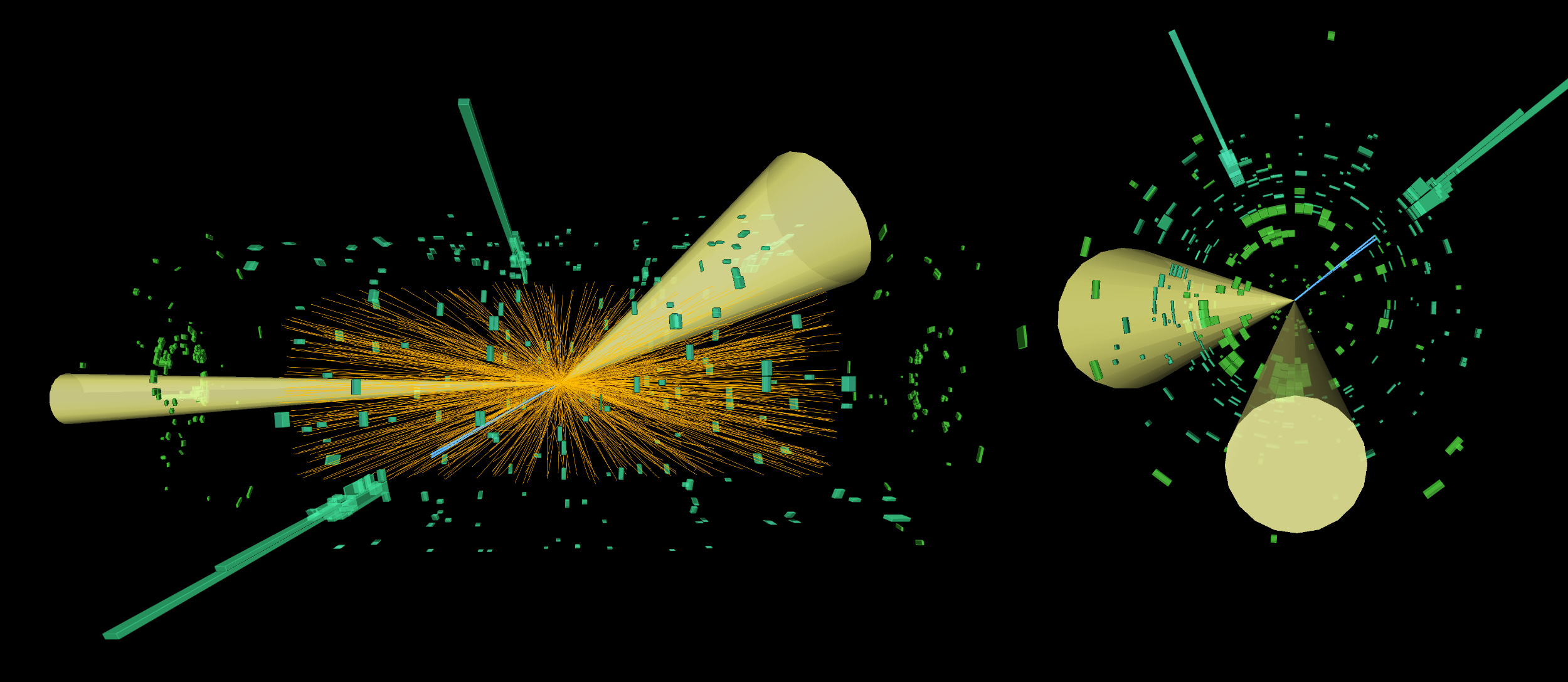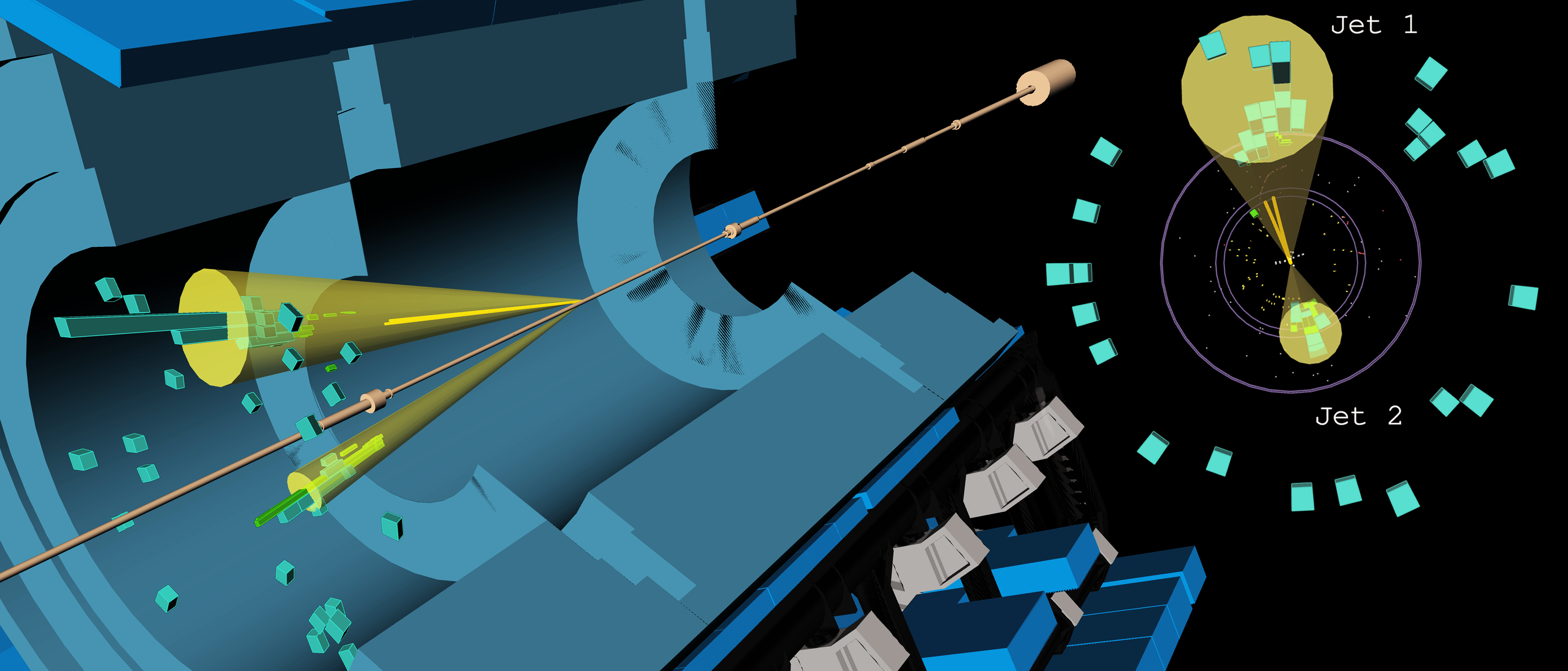ATLAS finds evidence of a rare Higgs boson Dalitz decay to two leptons and a photon
2 February 2021 | By
Since the discovery of the Higgs boson in 2012, scientists in the ATLAS and CMS Collaborations at the LHC have been hard at work characterising its properties, and hunting down all of the diverse ways in which this ephemeral particle can decay. From the copious but experimentally challenging decay to b-quarks (H→bb),to the exquisitely rare but low-background decay into four leptons (H→ZZ*→4ℓ), each offers a different avenue to study the properties of this new particle. Now, ATLAS has found first evidence of the Higgs boson decaying to two leptons (either an electron or muon pair with opposite charge) and a photon. This is one of the rarest Higgs boson decays yet seen at the LHC, with striking features that presented unique challenges for the ATLAS experiment.
The Higgs boson can decay to a lepton pair and a photon in three main ways: the leptons can be produced via an intermediate Z boson (H→Zγ→ℓℓγ) or a virtual photon (H→γ*γ→ℓℓγ), or the Higgs boson can decay to two leptons (H→ℓℓ) with one lepton radiating a final-state photon. For their new analysis, ATLAS physicists targeted the decay mediated by the virtual photon. In contrast to the familiar stable, massless photon, the γ* is a virtual particle that typically has a very small (but non-zero) mass and decays instantly to two leptons.
ATLAS physicists searched the full LHC Run-2 dataset for collision events with two leptons. They focussed on events where the dilepton mass (mℓℓ) is less than 30 GeV, a region in which the H→γ*γ→ℓℓγ process should dominate over two other processes that yield the same final state, as described above.

When two leptons become nearly inseparable
A peculiar feature of this decay channel is that the majority of dilepton pairs have a very small invariant mass – less than 1 GeV – and a comparably high transverse momentum. This means that they travel through the detector with nearly identical trajectories, only separated by a small angle. Differentiating between two very collimated muons is no problem for the ATLAS inner detector and muon spectrometer tracking systems. But for electrons, which are reconstructed in the electromagnetic calorimeter, two close-by electrons can deposit their energy within a few centimetres of one another.
This presents physicists with a challenge, since the typical energy deposited in the calorimeter by a single electron is contained inside a radius of about 10 cm. In this case, the signals from the two electrons will often overlap with one another, creating a unique experimental signature. Picking out these electron pairs required a specialised electron identification technique, careful energy calibration, and even a dedicated trigger to capture this special topology during the fast online event selection.

Having overcome these challenges, ATLAS physicists were able to select collision events containing a low-mass dilepton pair and a photon. To enhance the sensitivity of their analysis, they categorised the events into three kinematic regions designed to improve the signal-to-background ratio and enhance certain Higgs boson production modes (such as Higgs production via vector boson fusion).
The resulting Higgs boson signal, shown in Figure 2, was extracted using a signal-plus-background fit to the invariant mass of the dilepton-plus-photon system. ATLAS has measured a Higgs boson signal rate that is 1.5 ± 0.5 times the expectation from the Standard Model. The chance that the observed signal was caused by an unfortunate fluctuation in the background is 3.2σ – less than 1 in 1000!
For CP studies, good things come in threes
With vast amounts of data expected from the High-Luminosity LHC programme, studying rare Higgs boson decays will become the new norm. This will allow physicists to progress from reporting evidence for their existence, to announcing their observation and conducting detailed studies of Higgs boson properties – leading to ever more stringent tests of the Standard Model.
Observing the Higgs boson decay to a photon and a lepton pair (H→γ*γ→ℓℓγ or H→Zγ→ℓℓγ) will make it possible for physicists to study charge conjugation and parity (CP) symmetry in reactions involving the Higgs boson. CP symmetry is a way of saying that the mirror image of interacting particles, where particles are replaced by their anti-particles, should look exactly the same as the original interaction. This was a natural assumption until 1964, when physicists studying kaon particles noticed – to their great surprise – that this is not the case in the particle physics world. Since then, physicists have learned that violation of CP symmetry is a signature of the electroweak interaction and incorporated it into the Standard Model.
With the Higgs boson decaying into three particles, two of which are charged, physicists will be able to examine whether decays have a preferred direction (another way of defining CP symmetry violation). Such studies will allow researchers to improve their understanding of the origins of CP symmetry violation and may even lead to hints for new physics beyond the Standard Model.
Find out more




